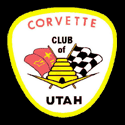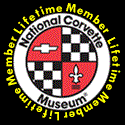|
|
Purpose: The purpose of this document is to aid club members in planning and executing convoys and trips as either a trip leader or simply a member. Getting to the destination safely and in a manner where no one is forced to take undue risks is the primary consideration. Please remember that members vary widely in their level of acceptable risk. The Utah legislature and news organizations have placed special emphasis on speeding over 100 MPH, even proposing to make it a felony! That third digit seems to be important. We should make sure all of our trips and cruises are inviting and all members are comfortable participating. Communications: The club uses GMRS radios to communicate in the convoy. Refer to the radio communication sheet that has a link on the home page of the CCU web site for how to obtain radios, Frequency and Privacy code. The radios have a rather short range, so it is a good idea for tour leaders on trips to have a cell number for each car and tour members to have the cell number of the leader for occasions where a member cannot keep with the convoy. You need to have a radio to avoid frustration and stay informed on what’s happening while traveling with the club. Trip Planning: Traveling with a group has special challenges that increase as the size of the group increases. The time that stops take is greatly increased when we overwhelm a gas station with four pumps and 20 cars need to get gas. Bathroom capacity is often even more challenging. Restaurants sometimes can't even hold the 40 people we may show up with. This may be able to be mitigated if there are multiple gas stations/ restaurants in close proximity where we can split up for going to the bathroom and getting drinks, etc. If we do that, a reassembly place and time needs to be understood by the convoy members. Take this into consideration when planning how far the convoy goes in a day; it’s not as far as you can go in a day with only one car to worry about. Plan and communicate convoy stops to the group. Google Maps or another map tool can be very valuable in determining where you can fit the convoy and how long it will take between stops. Two hours between stops is a good rule of thumb, although some areas are barren enough that may have to be stretched a little. Then make sure the group understands where the next stop is at least. Use Navigation Aids if Possible: There are three main options for Navigation in the Corvette. Built in Navigation, Android Auto, and Apple Car Play. The built in Navigation requires On-Star Navigation to have the same live features as Android Auto and Apple Car Play. All three will get you to the destination, but not necessarily the way the leader is going. It's important to listen for the instructions in the driver meeting to understand the flow and direction of the convoy while traveling with the club. Navigation aids can greatly ease your mind when you know in advance which way you have to turn and how far that is. If the leader doesn’t have a navigation aid, consider having someone fairly close behind that does have it to let you know over the radio when a turn is near or a hazard ahead is given by the map software. This can be equally valuable to members all along the convoy to know where they are going if they get behind due to truck, stop lights or other convoy interruptions. Leading the Convoy: Know where you're going. Pre-running the route is nice, but not always practical. Refer back to navigation section. When starting off, you need to take it easy after the initial start because the accordion effect will stretch out the convoy, especially if there are traffic lights and/or traffic. This has the same effect when getting out of a town along the route. If the convoy is not with you, you are not the leader; you're just the guy in front. The pace is set by the leader, so take into account the various drivers behind you. Not all are comfortable going higher speeds. Drivers in the rear are often interrupted by a truck in a no-passing zone and may not be able to get around them for a while. If the leader is going 20 mph faster than the truck, the guy that got held up for 15 minutes has to go 40 mph faster than the truck to catch up in the next 15 minutes. If you must drive with over-active exuberance, consider separating the convoy into a fast group and slow group with a slow group leader who knows where he's going. Use that radio to communicate to the convoy! Warn the guys behind you of hazards that you encounter. The guys behind don't always have the same range of visibility because of the vehicle they are following. Let folks know when a turn or stop is approaching, especially on multi-lane roads. On multi-lane roads prepare the convoy for exits or turns by getting into the lane needed early. DON'T pass two semis, then immediately exit! Tail Car and Mid-Pack Car: The tail car is the leader's eyes at the back of the convoy to let the leader know when the convoy has cleared the starting point or obstructions, like stoplights, along the way, or when the convoy is way behind the leader. The tail also reports when cars got caught by a light or other obstruction so the leader can adjust speed accordingly. The tail car determines status of cars that have dropped out for some reason and reports to the leader. Some times, the tail car needs to "block" to help the convoy change lanes. This is done by changing lanes when safe and maintaining a speed that allows other convoy members to change lanes ahead of him. When blocking, inform the other convoy members that you are blocking. When convoys are over ten cars long, a Mid-Pack car performs like the tail car from the middle. The Mid-Pack car also relays messages between the leader and tail when they are too far apart for radio range. Pack Cars: Come to the driver meeting in the morning or after lunch ready to go; checked out of hotel, car full of gas, already gone to the bathroom because we roll out right then. Cars in the pack should keep pace with the cars in front of them to their best ability. Maintaining a constant, safe distance from the car in front of you is desired to minimize the accordion effect. Accelerate briskly when leaving stop lights so the cars behind you can get through it as well. Keep your place as well as you can in the convoy without passing other convoy members unless absolutely required. Report on the radio when you see a previously unreported hazard or problem with the convoy, such as caught at the light, etc. It also helps to let those behind you know when they have room to pass or a car is coming. The one passing, however, is still responsible for their own safety when passing. When passing on a two-lane road, make sure you clear the passed vehicle with plenty of room for the guy behind to get back in as well. Don't leave your buddy stuck there! If you have to stop, report on the radio first, so your status in known. Be polite to other drivers. We don't want to be the ones that give Corvette drivers a bad name. Conclusion: For a printable .pdf document click click on Convoy Tips. |
||


